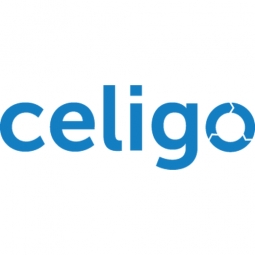Technology Category
- Application Infrastructure & Middleware - Data Exchange & Integration
- Application Infrastructure & Middleware - Middleware, SDKs & Libraries
Applicable Industries
- Cement
- Finance & Insurance
Applicable Functions
- Procurement
- Sales & Marketing
Use Cases
- Leasing Finance Automation
Services
- System Integration
About The Customer
Lightbend is a computer software company based in San Francisco, CA. Founded in 2010 by Martin Odersky, Jonas Bonér, and Paul Phillips, the company specializes in providing scalable, high-performance microservices frameworks and streaming engines for building data-centric systems optimized for cloud-native infrastructure. Lightbend has strategic partnerships with IBM, Red Hat, and Accenture, and its clientele includes 27 of the Fortune 100 companies. The company uses Salesforce as its CRM and NetSuite as its basic accounting system.
The Challenge
Lightbend has been experiencing steady growth, which led to the company outgrowing its existing accounting software. The company's billing and revenue recognition processes were very manual, leading to inefficiencies and errors. The company wanted to integrate Salesforce, its CRM, with NetSuite, its accounting system. However, due to the manual nature of the work, data synchronization between Salesforce and the accounting system was error-prone. The company was expecting more volume growth and was struggling to keep track of its sales and billing information, leading to missed opportunities and challenges.
The Solution
Lightbend chose Celigo as its integration solution after receiving positive feedback from others who had experience with it. Celigo enabled a complete workflow between Salesforce and NetSuite, allowing Lightbend to easily reconcile its orders in NetSuite against what had been closed won in Salesforce. The company used Celigo to export its sales orders to NetSuite and then process them. Basic information from NetSuite was pushed back to Salesforce if it was about the order or if it had been closed. Contract renewals were set up in NetSuite, and renewal quotes were pushed back into Salesforce. This integration provided real-time data synchronization, ensuring that both the finance and sales teams at Lightbend had up-to-date and accurate information.
Operational Impact

Case Study missing?
Start adding your own!
Register with your work email and create a new case study profile for your business.
Related Case Studies.

Case Study
System 800xA at Indian Cement Plants
Chettinad Cement recognized that further efficiencies could be achieved in its cement manufacturing process. It looked to investing in comprehensive operational and control technologies to manage and derive productivity and energy efficiency gains from the assets on Line 2, their second plant in India.

Case Study
Real-time In-vehicle Monitoring
The telematic solution provides this vital premium-adjusting information. The solution also helps detect and deter vehicle or trailer theft – as soon as a theft occurs, monitoring personnel can alert the appropriate authorities, providing an exact location.“With more and more insurance companies and major fleet operators interested in monitoring driver behaviour on the grounds of road safety, efficient logistics and costs, the market for this type of device and associated e-business services is growing rapidly within Italy and the rest of Europe,” says Franco.“The insurance companies are especially interested in the pay-per-use and pay-as-you-drive applications while other organisations employ the technology for road user charging.”“One million vehicles in Italy currently carry such devices and forecasts indicate that the European market will increase tenfold by 2014.However, for our technology to work effectively, we needed a highly reliable wireless data network to carry the information between the vehicles and monitoring stations.”

Case Study
Safety First with Folksam
The competitiveness of the car insurance market is driving UBI growth as a means for insurance companies to differentiate their customer propositions as well as improving operational efficiency. An insurance model - usage-based insurance ("UBI") - offers possibilities for insurers to do more efficient market segmentation and accurate risk assessment and pricing. Insurers require an IoT solution for the purpose of data collection and performance analysis

Case Study
Smooth Transition to Energy Savings
The building was equipped with four end-of-life Trane water cooled chillers, located in the basement. Johnson Controls installed four York water cooled centrifugal chillers with unit mounted variable speed drives and a total installed cooling capacity of 6,8 MW. Each chiller has a capacity of 1,6 MW (variable to 1.9MW depending upon condenser water temperatures). Johnson Controls needed to design the equipment in such way that it would fit the dimensional constraints of the existing plant area and plant access route but also the specific performance requirements of the client. Morgan Stanley required the chiller plant to match the building load profile, turn down to match the low load requirement when needed and provide an improvement in the Energy Efficiency Ratio across the entire operating range. Other requirements were a reduction in the chiller noise level to improve the working environment in the plant room and a wide operating envelope coupled with intelligent controls to allow possible variation in both flow rate and temperature. The latter was needed to leverage increased capacity from a reduced number of machines during the different installation phases and allow future enhancement to a variable primary flow system.

Case Study
Automated Pallet Labeling Solution for SPR Packaging
SPR Packaging, an American supplier of packaging solutions, was in search of an automated pallet labeling solution that could meet their immediate and future needs. They aimed to equip their lines with automatic printer applicators, but also required a solution that could interface with their accounting software. The challenge was to find a system that could read a 2D code on pallets at the stretch wrapper, track the pallet, and flag any pallets with unread barcodes for inspection. The pallets could be single or double stacked, and the system needed to be able to differentiate between the two. SPR Packaging sought a system integrator with extensive experience in advanced printing and tracking solutions to provide a complete traceability system.




